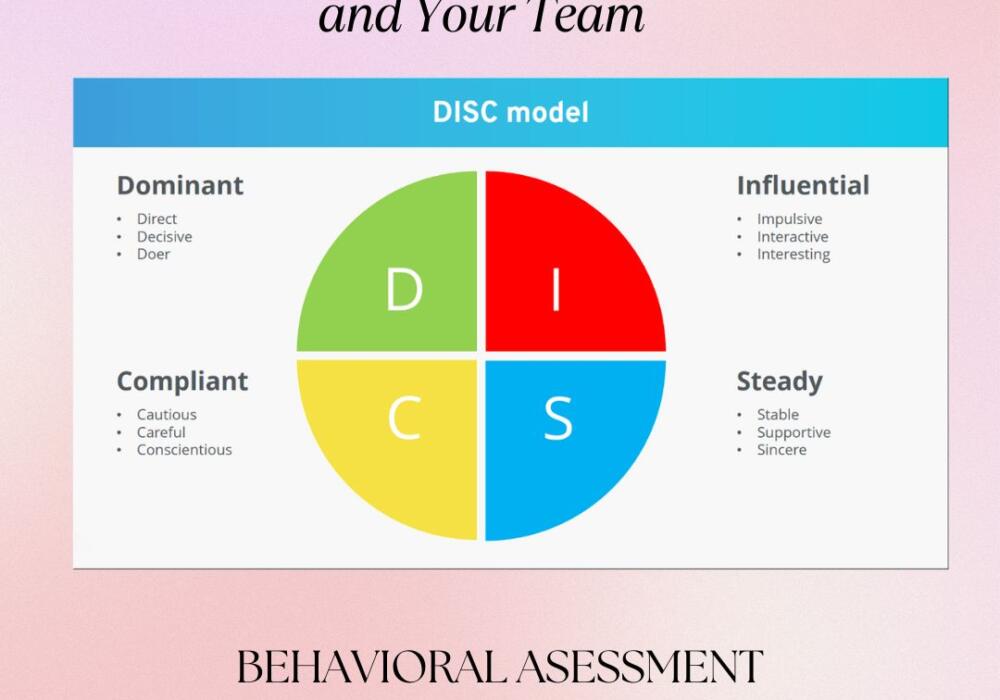DISC Behavioral Assessment
SJ Personnel are accredited to perform DISC assessments for individuals or in a team environment. Contact Sarah Charleston to find out more… email: sarah@sjpersonnel.com.au
DISC is a behavioral assessment tool that measures an individual’s personality traits and behavior styles. It is based on the DISC theory developed by psychologist William Moulton Marston in the 1920s. The DISC model identifies four primary personality traits: Dominance (D), Influence (I), Steadiness (S), and Conscientiousness (C). These traits are represented in the acronym DISC.
Here’s a brief overview of each personality trait:
Dominance (D):
Characteristics: Assertive, decisive, competitive, results-oriented, and direct.
Communication Style: Prefers to take charge, likes challenges, and may be more straightforward in communication.
Influence (I):
Characteristics: Outgoing, sociable, persuasive, enthusiastic, and optimistic.
Communication Style: Enjoys interacting with people, values relationships, and may use expressive and emotive language.
Steadiness (S):
Characteristics: Patient, cooperative, calm, empathetic, and team-oriented.
Communication Style: Prefers a stable and harmonious environment, values collaboration, and may be more reserved.
Conscientiousness (C):
Characteristics: Detail-oriented, analytical, systematic, precise, and cautious.
Communication Style: Emphasizes accuracy, values structure and planning, and may ask detailed questions.
DISC assessments are commonly used in various settings, including workplaces, to improve communication, team dynamics, and interpersonal relationships. Individuals can gain insights into their own behavior preferences and learn how to adapt their communication and work styles to better collaborate with others.
It’s important to note that DISC assessments are one of many tools available for understanding personality, and they provide a broad overview rather than an exhaustive analysis. When interpreting DISC results, it’s crucial to consider the context and recognize that individuals may exhibit a combination of these traits to varying degrees.








